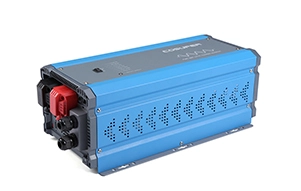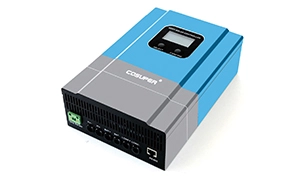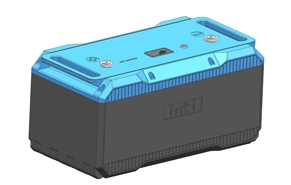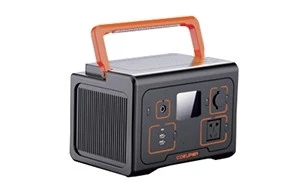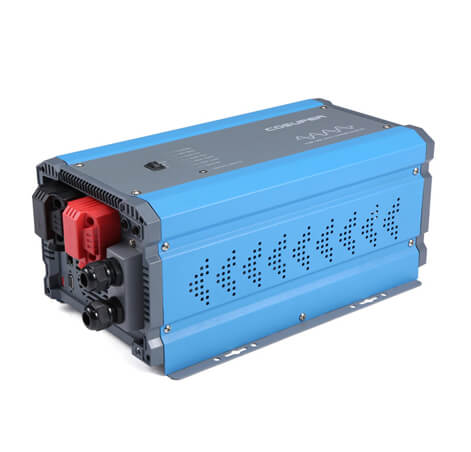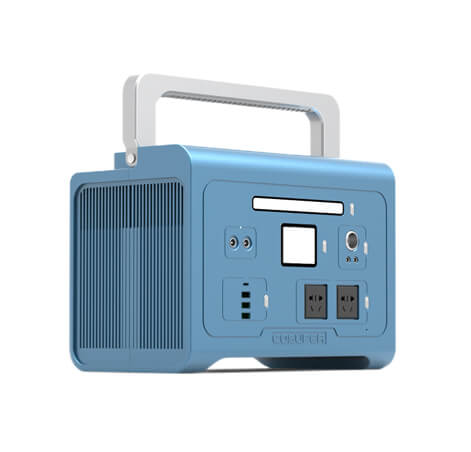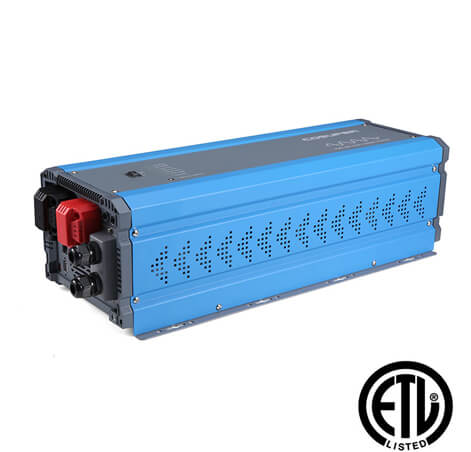When choosing an off-grid inverter, several technical parameters are also very important, such as system voltage, output power, peak power, conversion efficiency, switching time, etc. The selection of these parameters has a great impact on the power consumption needs of the load.
Off-grid inverter system voltage
This is the voltage of the battery pack. The input voltage of the off-grid inverter is consistent with the output voltage of the controller. When designing and selecting, attention should be paid to keeping it consistent with the controller.
Off-grid inverter output power
The output power of the off-grid inverter can be expressed in two ways. One is the apparent power representation, with the unit of VA. This is a reference to UPS marking. The actual output active power needs to be multiplied by the power factor. For example, a 500VA off-grid inverter with a power factor of 0.8 has an actual output active power of 400W, which means it can drive a resistive load of 400W, such as lights, induction cookers, etc. The second is the active power representation, with the unit of W. For example, a 5000W off-grid inverter has an actual output active power of 5000W.
Off-grid inverter peak power
In the photovoltaic off-grid system, the components, batteries, inverters, and loads form an electrical system. The output power of the inverter is determined by the load. Some inductive loads, such as air conditioners and water pumps, have starting power 3-5 times their rated power. Therefore, off-grid inverters have special requirements for overload. The peak power refers to the overload capacity of the off-grid inverter.
The inverter provides startup energy to the load. Some of it comes from batteries or photovoltaic modules, and the excess is provided by the internal energy storage components of the inverter – capacitors and inductors. Capacitors and inductors are both energy storage components. The difference is that capacitors store electrical energy in the form of an electric field. The larger the capacity of the capacitor, the more energy it can store. On the other hand, inductors store energy in the form of a magnetic field. The larger the magnetic permeability of the inductor's magnetic core, the larger the inductance, and the more energy it can store.
Off-grid inverter conversion efficiency
The conversion efficiency of off-grid systems includes two aspects. The first is the efficiency of the device itself. The off-grid inverter circuit is complex and undergoes multiple transformations, so the overall efficiency is slightly lower than that of grid-tied inverters, generally between 80% and 90%. The larger the power of the inverter, the higher the efficiency. High-frequency isolation has higher efficiency than power frequency isolation, and higher system voltage also results in higher efficiency. The second aspect is the efficiency of battery charging and discharging, which is related to the type of battery. When photovoltaic power generation and load power consumption are synchronized, the load can be directly supplied by photovoltaics without the need for battery conversion.
Off-grid inverter switching time
In off-grid systems with loads, there are three modes: photovoltaic, battery, and grid power. When the battery energy is insufficient and switches to grid power mode, there is a switching time. Some off-grid inverters use electronic switch for switching, with a time within 10 milliseconds, so desktop computers will not shut down and lights will not flicker. Some off-grid inverters use relays for switching, and the time may exceed 20 milliseconds, which may result in desktop computers shutting down or restarting.

 English
English 